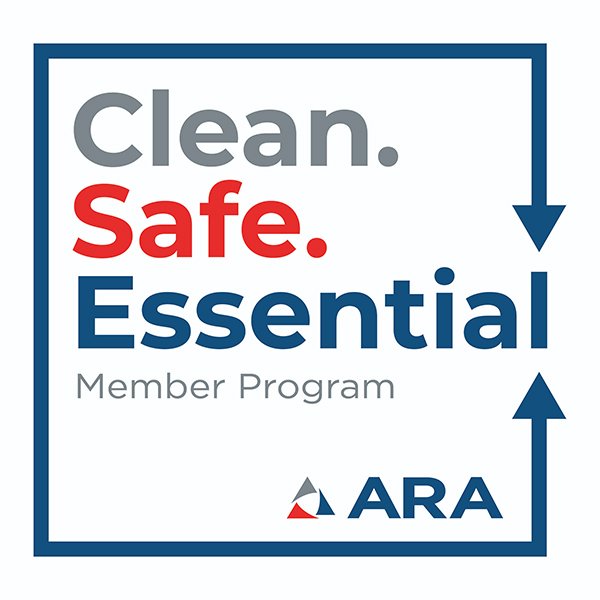Share "Why, When, and How to Dethatch a Lawn"
You can apply the most nutritious fertilizer, optimize your watering schedule, and follow all the best mowing practices, but your lawn could still look thin, dull, and weedy if it isn’t properly dethatched. But why does dethatching matter so much, and when and how is it the best choice for your lawn?
About Thatch
Thatch is a thick, spongy layer of organic debris at the base of your turf, between the grass shoots and the soil. It is comprised of stems, roots, dead blades, bits of leaves, and other material, that ideally would decompose to enrich the soil and nourish your lawn. When thatch builds up more quickly than it can decompose, however, it can cause numerous problems with grass growth and soil health.
A thick layer of thatch – more than one-half inch thick – can become compacted, reducing drainage and preventing water and air from circulating into the soil, which can cause root rot. Fertilizers can’t properly penetrate thick thatch, and pre-emergent herbicides are less effective because they can’t sink through the thick layer to catch dormant seeds. Thatch can also harbor fungus and parasites that can infest your lawn.
A thinner thatch layer, however, can be beneficial. It can provide insulation to delicate roots, protecting them from extreme temperature shifts. Some thatch can also improve the resiliency of the turf, particularly in high-traffic areas or where soil is denser.
To check the thickness of your thatch, cut a small wedge out of the lawn and examine the layer between the grass blades and the soil. If that layer is more than one-half inch thick, it is time to dethatch your lawn.
When to Dethatch Your Lawn
Ideally, dethatching should be done during the cool seasons – either in early spring or mid-fall. Because dethatching is stressful, it should not be done when your lawn is under duress from high summer heat or drought conditions. Similarly, a dormant lawn should not be dethatched, because it could cause too much damage that the turf will not be able to recover from.
Depending on your lawn and how quickly thatch builds up, it is not necessary to dethatch annually. Some types of grass, however, build up thatch more quickly and may need more frequent dethatching. Kentucky bluegrass and creeping red fescue are particularly prone to thatch buildup and may need dethatching more often than other types of turf. Ultimately, you should plan to check your lawn’s thatch once or twice a year, but only to dethatch when it becomes necessary.
How to Dethatch Your Lawn
If your lawn only has a light layer of thatch or your property is small, it’s easy to dethatch by hand with a metal rake. Choose a sturdy rake with slightly curved tines that can bring loosened thatch to the surface (these are occasionally sold as dethatching rakes). Wet your lawn slightly to help the thatch stick so it can be collected more easily, and give it a firm raking. Raking in multiple directions will help break up and remove more thatch. Once you’ve collected piles of thatch – it will look like old, dead grass – gather it for proper disposal or composting.
If you have a larger property or a much thicker thatch layer, it can be easier to rent a dethatching machine. These powerful automatic rakes – also called a power rake or vertical mower – will slice into the thatch to loosen it, then bring it to the surface with rotating tines.
Whether you will be dethatching by hand or using a power rake, take care to…
- Clearly mark sprinkler heads, buried utility lines, and other obstacles before beginning.
- Carefully read and follow all operating instructions for power equipment.
- Do not overestimate your physical condition for dethatching, as it can be a very strenuous activity.
It is best not to remove all thatch at once, since every lawn will still need some of this protective layer to insulate the soil and cushion turf roots. Instead, remove a portion of the thatch and then let the lawn recover until the next suitable time for dethatching.
After you have finished dethatching, water the lawn well and consider overseeding thin areas to give new grass an opportunity to fill in for luxuriant turf.
Preventing Thatch Buildup
It can be easier to prevent thatch buildup than to remove a very thick layer of debris. By keeping your lawn healthy, the rate of decomposition of shed debris will be adequate to minimize thatch. To prevent thatch from accumulating to unhealthy levels…
- Keep your lawn mowed to 2-3 inches in height so air and water can circulate to the thatch level and accelerate healthy decomposition.
- Mulch lawn clippings and dropped leaves to encourage good bacterial growth and nitrogen levels that can help break down thatch.
- Check your soil’s pH level annually, and use lime, phosphorus, and other amendments to balance the pH and support healthy bacteria.
- Consider annual core aeration to break up compacted soils and improve air and water circulation through the thatch layer.
- Minimize lawn chemicals that can unbalance your soil’s pH and disrupt healthy bacteria and microbe growth.
With care, you can properly dethatch your lawn at exactly the right time to keep it healthy and lush, without accumulating an overly thick layer of unwanted debris.




Comments